Computational Equipment
Apple II Plus
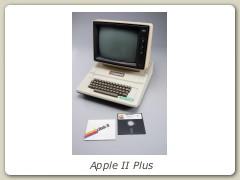
This Apple II+ Computer was one of the first personal computers made. (Apple I was only available in the form of a circuit board. One needed a power supply, keyboard, and display). Data were stored on 5.25” disks. It was purchased in 1981 by Dr. C.H. Lacy for use in the control system of the Droke Observatory automated 16-inch reflecting telescope, where it was used by him and his students for astronomical research and public “star parties” until about 1990. This telescope was one of the first computer-controlled telescopes in the world. A picture of Dr. Lacy with the telescope is also shown.
Dr. Lacy and Droke Observatory Telescope
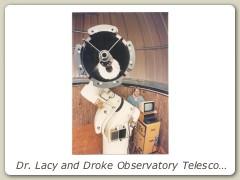
This telescope was one of the first computer-controlled telescopes in the world. Also see the Apple II Plus.
Computer Punch-cards and Tape
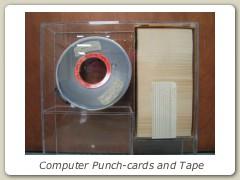
The punch cards were used for imputing programs and data into early digital computers (called main-frame computers). One line of a computer-program was punched on one card. A typical physics computer program, consisting of a few hundred lines of code, generated a box full of cards such as the one shown here. A single punch card is shown in front of the stack. This program was used by Professor Gupta’s student, Mahmood Soltanolkotabi, in the early 1980’s to analyze atomic spectroscopy data. The main-frame computers were placed at one location on the campus, called the Computer Center. The Center stored the programs on magnetic tapes such as the one shown on the left.
Commodore Pet Microcomputer
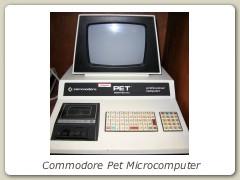
The Commodore PET Microcomputer was the first microcomputer used in the Department. It was bought in January 1979 for $546 ($1560 in 2007 currency). It had 8K of RAM and was programmed in BASIC. The computer came preloaded with BASIC on ROM. A cassette tape was used for the storage of programs and data.
EAI 380 Analog/hybrid Computing System
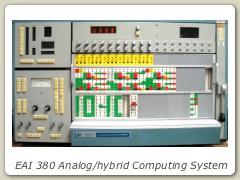
EAI 380 Analog/hybrid Computing System
Electro-Mechanical Calculator
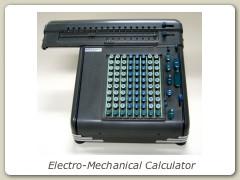
This Electromechanical Calculator was purchased by Professor Herman Schwartz in 1951 on an Atomic Energy Commission (AEC) grant to calculate energy levels of He. The calculator works by the rotation of gears and is only capable of addition and subtraction.
Electronic Calculator
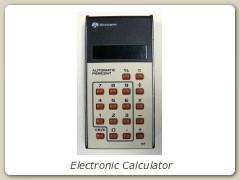
One of the first Electronic Calculators used in the Department (early 1970s). It uses an LED display and has only arithmetic and percent functions.
HP-45
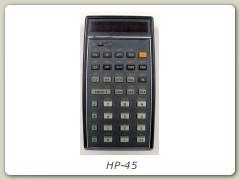
The HP-45 came on the market just a few months after the HP-35, the first scientific calculator. These calculators created quite a bit of excitement among scientists and engineers when they became available in 1973. Both were sold for $395, which is about $1845 in 2007 currency.
HP-55
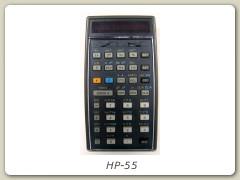
The HP-55 scientific calculator was introduced in 1975 and was sold for $395 ($1500 in 2007 currency). The significant distinguishing features of the HP-55 over the HP-45 were programming capabilities: 20 memory registers instead of 9, quartz-controlled timer, and several additional statistical functions.
IBM PC 5150
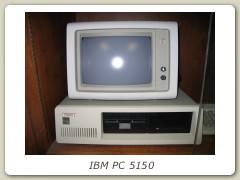
The IBM PC 5150 was first released in 1981 at a cost of $2880 (which is about $6600 in 2007 currency), much more than the Commodore PET and the Apple II purchased by the department previously. It featured 64kb of RAM and one 5.25” floppy drive. When the 5150 came out as the first IBM personal computer (though not the first personal computer, Apple II being the first), it set an industry standard by using an ISA card, which remained the standard for several years. This computer was used by professor Gupta’s students for research.
Image Writer II
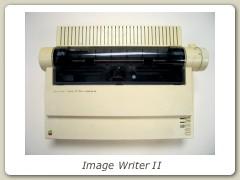
The Image Writer II dot matrix printer by Apple was first produced in 1985 and was made until 1996, making it the longest selling Apple product of that time. It even continued to sell 5 years after the advent of the inkjet StyleWriter printers in 1991. It could print in 8 colors, including black and white, and originally sold for $625 ($1200 in 2007 currency).
KIM-1 Microprocessor
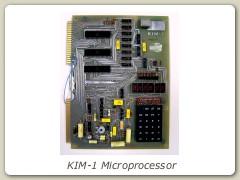
The KIM-1 microprocessor board preceded the first packaged microcomputers like the Apple or the Commodore PET (mid 1970s). The KIM-1 could print on the Teletyewriter (shown elsewhere in this collection), used hexadecimal, and could be programmed to read inputs and provide digital outputs.
Macintosh Plus
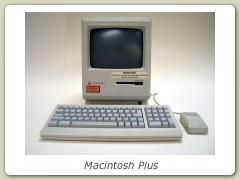
The Macintosh Plus was the longest produced Macintosh computer. It was released in 1986 for $2599 ($4917 in 2007 currency) and was not discontinued until 1990. It was the third Macintosh to hit the production line and introduced the SCSI bus for external drives and devices, and a RAM expansion to 4MB.
Slide Rules
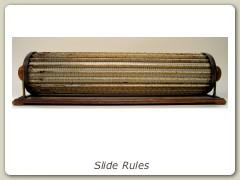
Slide Rules were used extensively before the advent of electronic computers. Hand held models were the most popular ones but their accuracy was limited. The drum type slide rule gave four figures of accuracy.
Teletype Machine
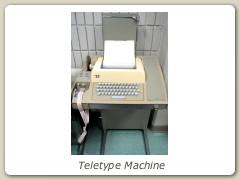
This Teletypewriter was used as an input-output device with several pieces of equipment in the Physics Department until the 1970’s. For example, data from a signal averager could be printed out or received on a punched paper tape. The data or a program from the paper tape could also be read by the machine for inputing into a computer, such as a PDP-8 computer. This machine was used by the department in the 1970’s.
Teletype Terminal
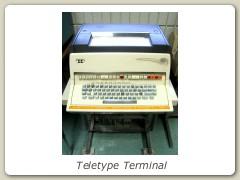
The Teletype Terminal was used with the University’s mainframe computer by Physics faculty and students in the 1960s. This terminal was hardwired to the mainframe and was the only computer terminal in the Physics Department.
TIPC-100A and Programmable 59
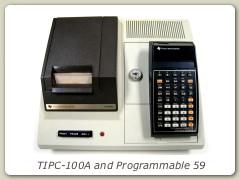
Texas Instruments PC-100A and Programmable 59 with Solid State Software. The Programmable 59 allowed scientists to program up to 5000 steps in their calculator. The PC-100A allowed scientists to print off the steps of their program to share with others as well as to find errors in the program. The PC-100A came out in 1979 and the 59 was released in 1981. The two together would have cost about $500 ($1500 in 2007 currency) and the PC-100A also served as a power adaptor for the Programmable 59. This calculator was used by Professor Paul Sharrah for a one credit-hour course on calculator physics.
TI Silent 700
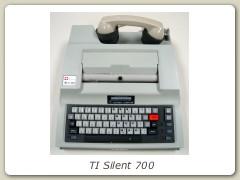
The Texas Instruments Silent 700 portable data terminal used an acoustic coupler modem to send and receive information over telephone lines to a computer at remote locations. It was released in 1976 and cost about $1995 (a whopping $7000 in 2007 currency) and weighed a mere 13 lbs. It printed with a dot-matrix heating element onto heat-sensitive paper.
Toshiba T1000
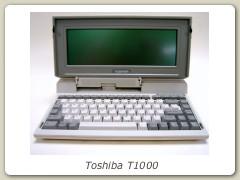
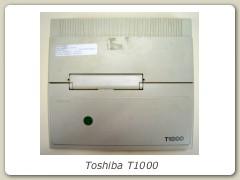
The Toshiba T1000 has long been named the first “real” laptop, as other models were much too large to carry, or even hold in your lap. It was first introduced in 1986 and cost $999 (about $1900 in 2007 currency). It was PC-compatible, and very similar to IBM’s suitcase sized “laptop,” but was much smaller and cost about one quarter the price. It ran MS-DOS 2.11, weighed about 6 lbs and had a rechargeable NiCd battery pack.